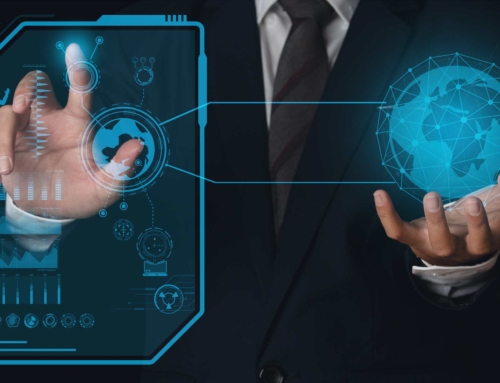How to Leverage SIEM Tools for Ransomware Detection
Understanding the Rise of Ransomware Threats
In today’s interconnected world, ransomware has become one of the most disruptive and costly cyber threats organizations face. With reports indicating that a business falls victim to ransomware every 11 seconds, the urgency for effective detection and response mechanisms has never been greater. These attacks can cripple operations, compromise sensitive data, and inflict substantial financial damage, making proactive defense essential.
The Role of SIEM Tools in Modern Cybersecurity
Security Information and Event Management (SIEM) tools play a central role in detecting and responding to ransomware. Acting as the nervous system of a security operation, SIEM aggregates, correlates, and analyzes log data from across an organization’s IT environment to provide real-time visibility and actionable insights.
By bringing together information from endpoints, networks, servers, cloud environments, and applications, SIEM enables security teams to monitor for suspicious activity and detect the early signs of a ransomware attack before it can escalate.
How SIEM Enhances Ransomware Defense
SIEM solutions employ a multi-layered approach to defending against ransomware:
-
Real-Time Visibility: SIEM provides immediate insight into events across all monitored systems, which is crucial for identifying and responding to threats quickly.
-
Threat Correlation: By linking seemingly isolated events, SIEM reveals patterns indicative of ransomware activity that might go unnoticed by siloed monitoring tools.
-
Proactive Detection: SIEM helps security teams identify unusual behavior — such as large-scale file encryption, spikes in resource usage, or connections to known malicious domains — that often precede a ransomware incident.
Recognizing Ransomware Indicators with SIEM
Early detection is key to stopping ransomware. SIEM tools help identify indicators of compromise (IoCs), such as:
-
Unusual spikes in file changes or extensions.
-
Unauthorized access attempts or privilege escalation.
-
Network connections to suspicious external servers.
-
Unexpected use of administrative tools or scripts.
By detecting these indicators early, organizations can act quickly to contain the threat and prevent it from spreading.
Best Practices for SIEM-Based Ransomware Detection
To get the most out of SIEM tools in defending against ransomware, consider these best practices:
Fine-Tune Correlation Rules
Adjust SIEM’s correlation rules to minimize false positives and focus on the most credible threats. Regular updates to these rules help ensure that detection aligns with evolving attacker tactics.
Integrate Threat Intelligence
Enrich SIEM with up-to-date threat intelligence feeds so it can recognize and flag activities linked to known ransomware campaigns.
Customize Alerts
Tailor alerts to your organization’s specific environment and risk tolerance, ensuring the right balance between noise reduction and sensitivity.
Regularly Review and Update Logs
Ensure that all critical systems are feeding logs into the SIEM and that retention policies allow for thorough forensic analysis if an incident occurs.
Train Your Team
Complement SIEM technology with human expertise by training staff to understand alerts, investigate incidents, and respond effectively.
Ensuring Real-Time Visibility and Rapid Response
SIEM’s ability to centralize and analyze massive volumes of data enables teams to respond to threats in real time. Automation features available in many SIEM platforms can also help contain threats more quickly — for example, by isolating affected devices or disabling compromised accounts — reducing the time window for attackers to inflict damage.
Did You Know? SIEM tools can detect ransomware-related anomalies — such as unauthorized file encryption or lateral movement across a network — often before critical data is locked or exfiltrated.
Building Resilience with SIEM
In a cyber threat landscape where ransomware continues to evolve, SIEM tools empower organizations to stay ahead by providing real-time visibility, intelligent correlation, and rapid response. By deploying SIEM effectively, businesses can strengthen their security posture, reduce downtime, and limit the impact of ransomware attacks.
With continuous monitoring and thoughtful configuration, SIEM becomes more than just a compliance tool — it becomes a critical component of your ransomware defense strategy, enabling you to detect, respond to, and recover from attacks with confidence.
Moving Forward
Leveraging SIEM tools for ransomware detection helps organizations transition from reactive defense to proactive resilience. By uncovering the subtle signs of compromise and enabling rapid, informed response, SIEM strengthens your ability to defend against one of the most pervasive cyber threats today.
Investing in the right technology, practices, and training ensures your organization remains prepared — not just to withstand ransomware, but to outpace it.
FAQ
What is ransomware and why is it a growing threat? ▼
Ransomware is a type of malware that encrypts a victim’s files, making them inaccessible until a ransom is paid, often in cryptocurrency. It’s a growing concern because cybercriminals are continuously innovating their attack methods, targeting organizations of all sizes with increasing sophistication. Consequently, these attacks can lead to significant financial loss and data breaches.
How do SIEM tools help in detecting ransomware? ▼
SIEM tools monitor and analyze the event data from across an organization’s IT infrastructure in real-time. They aid in ransomware detection by identifying suspicious activity that may indicate an attack, allowing for rapid response and mitigation efforts. Additionally, SIEM tools correlate data from multiple sources, which enhances their ability to spot anomalies that could signal a ransomware threat.
Can SIEM tools prevent ransomware attacks? ▼
While SIEM tools cannot outright prevent ransomware attacks, they are integral to an organization’s defense strategy. By offering real-time visibility and alerts, they enable our security teams to quickly respond to potential threats, which, in turn, can prevent ransomware from spreading or executing its payload.
What are some key indicators of compromise (IoCs) for ransomware that SIEM can detect? ▼
Some key IoCs for ransomware that SIEM tools can detect include unusual outbound network traffic, irregular file access patterns, changes to file extensions, and patterns of failed file modifications. These indicators often signal that a ransomware attack may be underway or imminent.
Is it difficult to set up a SIEM for ransomware detection? ▼
Setting up a SIEM requires an understanding of your network architecture and the threat landscape. Initially, it might seem complex, but with proper planning and expertise, SIEM tools can be configured effectively to focus on ransomware detection alongside other security threats.
How does SIEM contribute to an organization’s overall cybersecurity posture? ▼
SIEM enhances an organization’s cybersecurity posture by providing comprehensive visibility across networks, detecting threats in real-time, and facilitating swift incident response. Consequently, it contributes to a robust defensive framework capable of adapting to the evolving threat landscape.
Can SIEM tools integrate with other security solutions? ▼
Absolutely. One of the strengths of SIEM tools is their ability to integrate with a variety of other security solutions, such as intrusion prevention systems, firewalls, and endpoint protection platforms. This integration feeds more comprehensive data into the SIEM, allowing for a more cohesive security monitoring and response strategy.
How often should an organization review and update SIEM rules for ransomware detection? ▼
Organizations should review and update SIEM rules regularly, ideally every few months, or whenever there is a significant change in the IT environment. Additionally, staying current with the latest ransomware threats is also critical, as it informs the necessary adjustments to detection rules to maintain efficacy.
Is training necessary for staff to manage SIEM for ransomware effectively? ▼
Yes, training is essential for staff to effectively manage SIEM for ransomware detection. Proper training ensures that team members understand how to operate the tool, interpret alerts, and respond to incidents quickly and efficiently. It also helps them to keep the SIEM solution updated with the latest threat intelligence.
What actions should be taken when SIEM detects a possible ransomware attack? ▼
When a possible ransomware attack is detected by SIEM, immediate actions should include isolating affected systems, disabling user accounts that are potentially compromised, initiating a backup recovery process if available, and conducting a thorough investigation to determine the attack’s scope. Additionally, engaging with cybersecurity experts to mitigate the attack and prevent future incidents is crucial for resilience.







